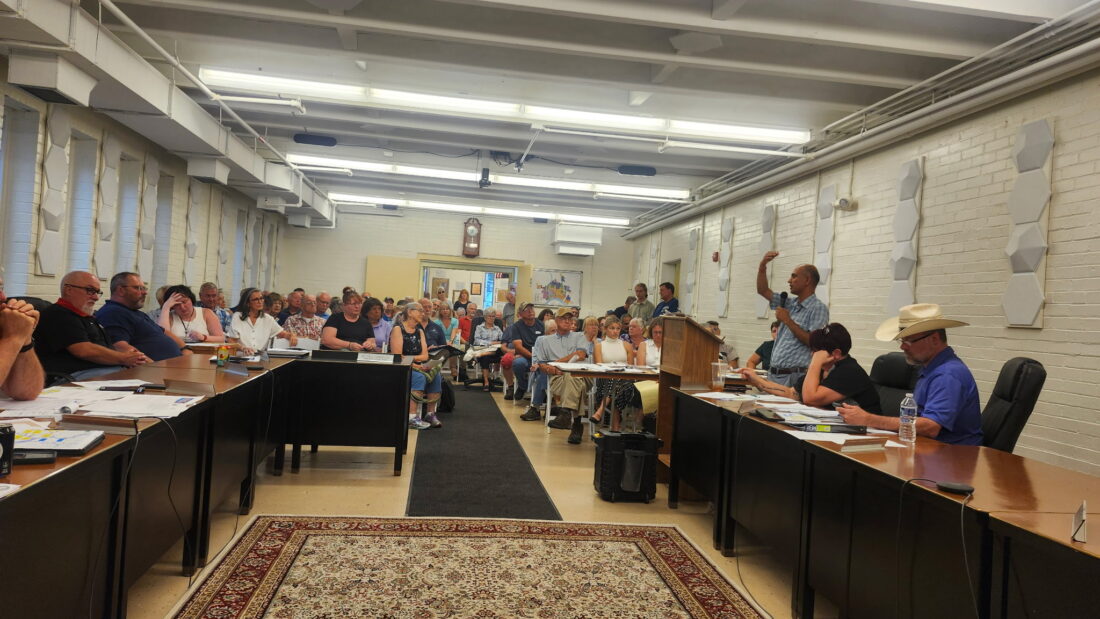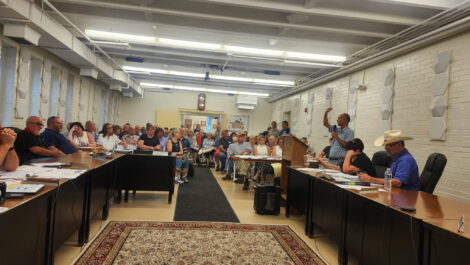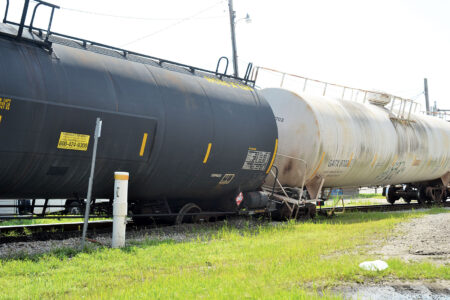Marietta City Council: Committee of the whole meeting held on injection wells
Committee of the whole meeting held on injection wells
- (Photo provided) Nearly 100 individuals gathered for the discussion on injection wells at Tuesday evening’s Marietta City Council Committee of the Whole meeting at the Armory.

(Photo provided) Nearly 100 individuals gathered for the discussion on injection wells at Tuesday evening’s Marietta City Council Committee of the Whole meeting at the Armory.
Marietta City Council unanimously passed a series of motions Monday night aimed at challenging investigating proposed injection wells in the region, including a request for a public hearing with the Ohio Department of Natural Resources (ODNR) and the formation of a special committee to investigate potential risks to local drinking water.
Councilmember Erin O’Neill led the charge, motioning for Council President Susan Vessels — alongside the city’s law director — to formally request a public hearing and submit written comments to ODNR regarding a recently advertised Class II injection well permit, which is scheduled to begin drilling soon. The public comment period ends Aug. 9.
The council also discussed the possibility of partnering with Warren Township, which would also be impacted by the injection well. While some members supported a joint resolution to potentially add pressure on ODNR, O’Neill noted that township officials are welcome at the hearing.
Councilmember Bill Gossett expressed concern about ODNR’s alleged history of unresponsiveness, suggesting that involving more entities might increase the likelihood of the agency taking the city seriously.
Later in the meeting, Councilmember Jon Grimm introduced a motion to form a special committee to investigate the potential impact of Class I and Class II injection wells on the city’s water supply. The committee, which will be chaired by Councilmember Ben Rutherford, will have the authority to issue summons under section 121.07 of the city’s codified ordinances.
“I’m suggesting this path because if there’s anything to what we’ve heard that there’s precedent that these are ignored,” said Grimm.
The council also approved a motion to submit public comment to the Ohio EPA and request a hearing on a separate Class I well proposal.
Another motion passed unanimously called for the council to formally recommend that any new Class II wells adhere to more stringent safety rules enacted by the state in January 2022. Councilmembers expressed frustration that current applications — some dating back to before the rule change — might be grandfathered in under less restrictive regulations.
Council invited several different experts on the subject, including petroleum engineers, lawyers, environmental scientists and geologists. Bev Reed, an environmental organizer with Buckeye Environmental Network, explained that under the “new rules,” daily injection volumes could be reduced from 3,000-5,000 barrels per day to as few as 200 barrels.
“It’s common sense,” said Reed. “These rules are stricter for a reason, and they need to apply moving forward.”
Representing DeepRock Disposal Solutions, Environmental and Energy Law Attorney Laura Goins shared DeepRock’s perspective on the injection wells.
“I know that tonight’s discussion around injection wells brings lots of strong feelings to the surface, and that’s completely understandable when people hear words like injection and waste, it’s natural to wonder, ‘Is this safe? Is it going to affect our groundwater?'” said Goins. “Injection wells, when properly constructed and regulated, are the safest and most scientifically supported method for disposing of oil field grime. That’s not just the industry’s view. It’s a conclusion backed both by the Ohio Department of Natural Resources and the United States Environmental Protection Agency.”
Grimm raised concerns about voting on technical matters without fully understanding the regulatory differences, asking for more time to study the rules. Still, the urgency of potential drilling approvals led the council to support immediate communication with ODNR and the EPA through letters, while reserving the option for future resolutions after the special committee conducts its review.
Council concluded the session by passing a final motion urging ODNR to halt all wastewater injection activity within five miles of the city’s aquifer or designated source water protection area, pending a comprehensive analysis.
“We are doing everything within our power,” Vessels said, “to make sure these decisions aren’t made in the dark, and that they reflect the will and safety of our community.”






